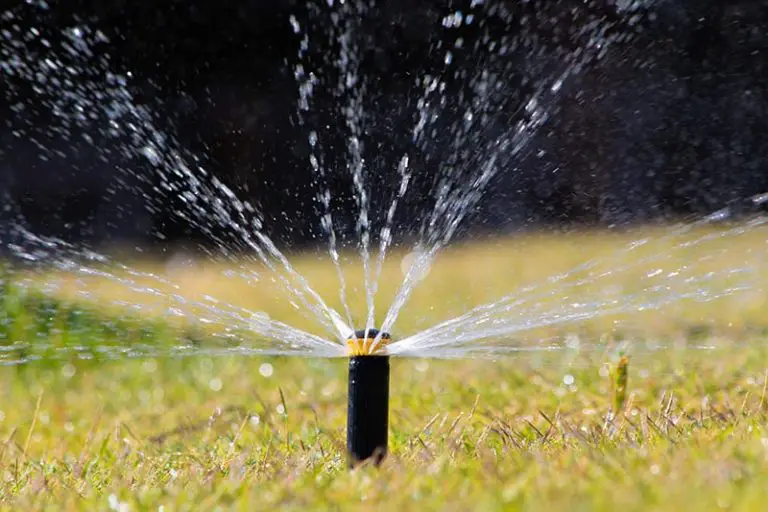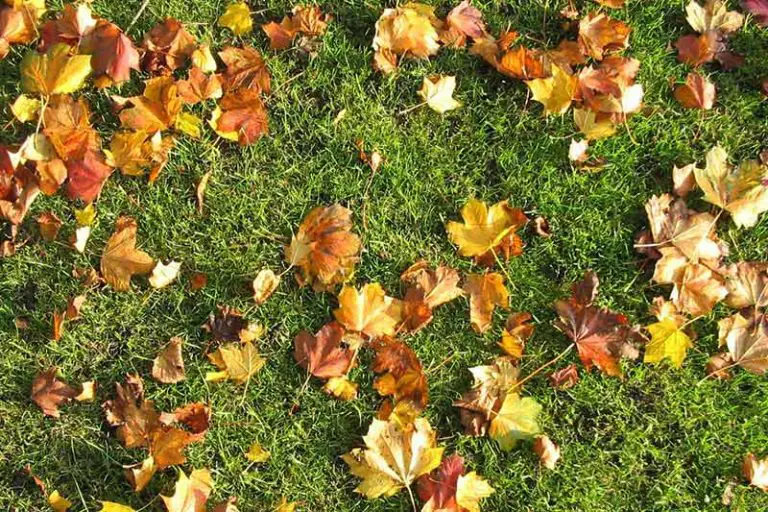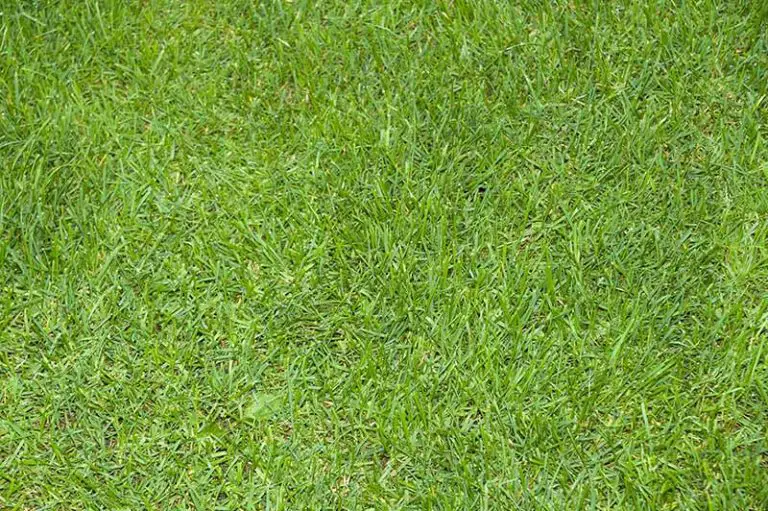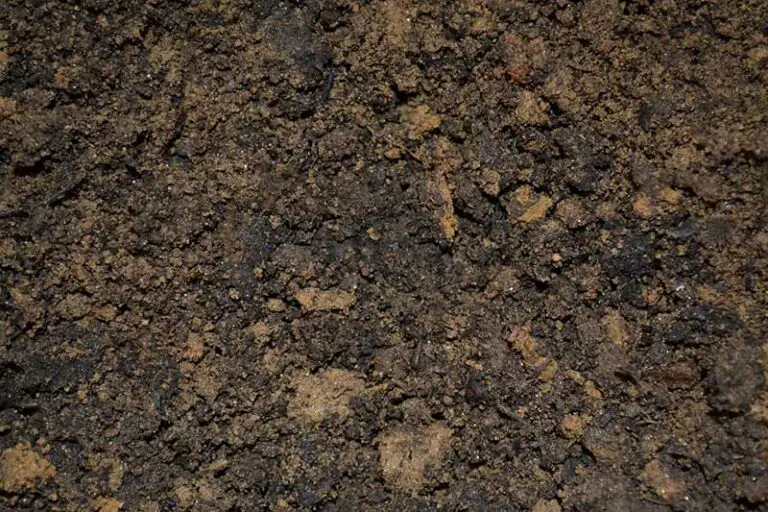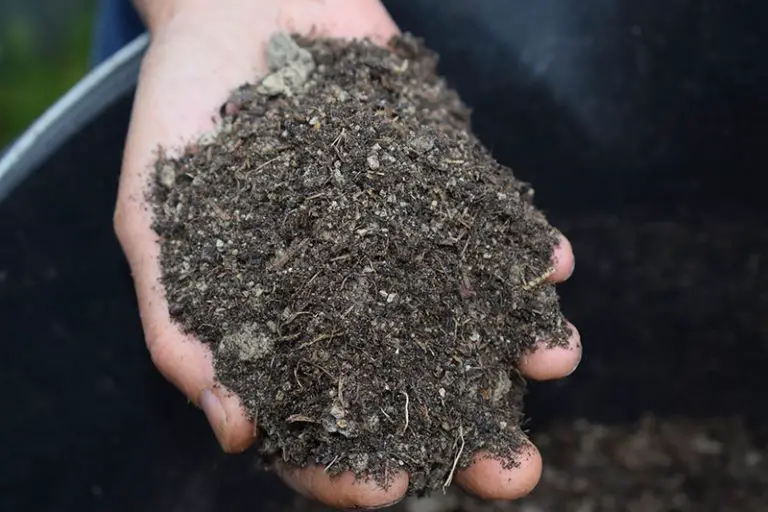Eliminating Bermuda Grass in Lawns and Gardens
While many grow Bermuda grass intentionally as a hardy turfgrass, it is considered by many others to be a weed when it grows where it isn’t wanted. Bermuda grass is a particularly challenging weed to control due to its aggressive growth habit and hardiness against a range of conditions. However, there are some effective methods, both natural and chemical, that you can use to kill Bermuda grass
To kill Bermuda grass naturally, you can dig it out with a trowel, solarize the area, or mulch the area. For more severe infestations of Bermuda grass weeds, you may need to resort to chemical control in the form of a selective systemic herbicide.
Is Bermuda Grass a Weed?
Unless you’re actively trying to grow this grass on your lawn, Bermuda grass can be considered a weed when it grows in a planting bed undesirably. In lawns, particularly those growing tall fescue and zoysia grass, Bermuda grass is an invasive grassy weed. Similarly, Bermuda grass can take over a garden bed quickly if left uncontrolled.
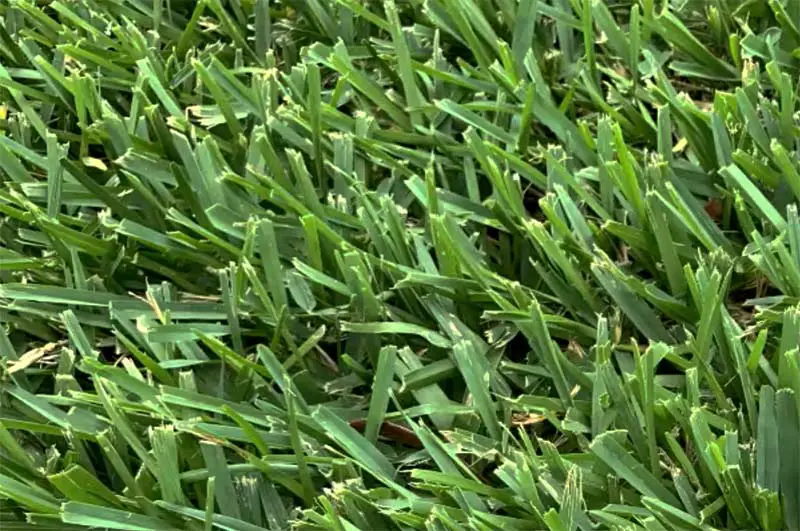
For many homeowners in the south, Bermuda grass is a weed that can be difficult to control. For others, Bermuda grass is often intentionally grown as a warm-season grass type, having a vigorous growth habit and extensive root system. Due to its growth habit and roots, Bermuda grass is an extremely hardy grass type with a high tolerance to heat, drought, and foot traffic. This makes it an ideal choice for those trying to grow grass in challenging dry conditions and low-nutrient soils.
However, it is also due to this growth habit that Bermuda grass is so difficult to get rid of in places where it isn’t wanted. This grass spreads by both rhizomes and stolons; rhizomes are underground stems, while stolons are above-ground runners. It also has an aggressive seeding habit. With all of these properties combined, Bermuda grass control can be particularly difficult in the cases that it’s growing in a planting bed or lawn undesirably, or if you want to clear a Bermuda grass lawn to make way for a different grass type.
With that said, there are several effective methods you can use to get rid of Bermuda grass from a lawn or garden bed. We have explained these methods of Bermuda grass control, both chemical and organic, in the following sections.
What’s the Best Bermuda Grass Killer?
The best Bermuda grass killer is either a non-selective herbicide containing glyphosate or a selective systemic herbicide specifically designed to kill Bermuda grass.
The majority of standard grass weed killers are only capable of killing the top growth of grassy weeds, leaving the roots unaffected. Attempting to use these weed killers on Bermuda grass will just allow it to regrow from the nutrients it has stored in its roots. This is why it’s important to choose a systemic herbicide; these herbicides contain chemicals that spread from the upper growth down to the roots, rhizomes, and stolons, thus killing off the entire plant. These herbicides are ideal to use on lawns infested with Bermuda grass to prevent harming the wanted growth.
The other type of weed killer you can use to kill Bermuda grass is a non-selective herbicide, such as those containing glyphosate. These weed killers are indiscriminate and will kill off all plant matter they make contact with. For this reason, you should only use non-selective herbicides to spot treat Bermuda grass in garden beds.
How to Kill Bermuda Grass in Lawn
For light infestations on lawns, you can get rid of Bermuda grass by hand-pulling or using a selective systemic Bermuda grass weed killer. For more extensive infestations, it may be necessary to remove all of the grass and reseed the lawn from scratch.
Remove Bermuda Grass From Lawn Manually
The first method you can use to get rid of Bermuda grass on a lawn without harming the surrounding grass is to remove it by hand. This method is only suitable for smaller lawns or minimal infestations of the Bermuda grass weed. As Bermuda grass is so persistent, you may have to repeat this method regularly to get rid of the weed for good.
1. Identify Bermuda Grass on Lawn
Look across your lawn and identify where the Bermuda grass is growing. This is to avoid removing any of your desirable grass when digging or pulling the weed.
Bermuda grass has coarse, blue-green blades and can form large patches on the lawn amongst your desired grass. It will form both overground rhizomes, which appear as green, horizontal stems, and underground stolons, which look like brown, thick roots.
The patches of Bermuda grass may be more noticeable in the early morning as it tends to hold heavy dew at this time of day. If you have cool-season grass, you’ll be able to spot the Bermuda grass most easily during the summer months when the surrounding grass is stressed by heat or drought. In the winter, Bermuda grass will turn dormant, appearing as brown, dead patches of turf.
2. Dig Up Bermuda Grass
Using a hand trowel, dandelion puller, or similar tool, dig up the Bermuda grass. It’s crucial to remove all rhizomes, stolons, and the entirety of the root system; if any part of the Bermuda grass weed is left in the soil, it will simply spring back up soon after the removal. Use your tool to dig 6 inches deep into the ground before meticulously pulling up every part of the plant.
3. Repeat Process As Necessary
It’s extremely unlikely that you’ll be able to eradicate the Bermuda grass from one hand-pulling session. You should therefore repeat this process as and when you spot the weed popping up on your lawn. Over time, repeating this process will gradually get rid of the Bermuda grass weed for good.
Use Selective Bermuda Grass Weed Killer on Lawn
Another method to get rid of Bermuda grass without harming the surrounding grass on a lawn is to apply a selective weed killer. For this method, it’s important to choose the correct type of herbicide to ensure you kill the Bermuda grass down to its roots; these products are known as systemic herbicides.
1. Purchase Selective Systemic Bermuda Grass Weed Killer
As we’ve already explained, the best type of weed killer to treat Bermuda grass on a lawn is a selective systemic herbicide. Purchase this herbicide and make sure that the type you choose is safe for use on your lawn’s grass type.
2. Wait For Appropriate Conditions to Apply Weed Killer
For the herbicide to be most effective, it’s crucial to apply it to the Bermuda grass at the right time. You should treat Bermuda grass weeds when they’re actively growing, which would be at some point between May and September. For best results, apply the treatment first in the early spring when the weeds are smaller than 6 inches; follow up with a second application when any new growth reaches the same height.
3. Apply Weed Killer to Bermuda Grass
Apply the weed killer to the Bermuda grass weeds as per the instructions for your chosen product. Make sure to wear protective clothing including gloves and safety glasses to avoid accidental injury from the harmful chemicals.
Remove All Grass on Lawn and Reseed
As a last resort for extensive infestations, it may just be best to remove all of the grass from your lawn and reseed from scratch.
1. Remove Grass From Lawn
You will first need to remove all grass and vegetation from your lawn to begin this process. There are a number of methods you can use to remove an old lawn, including stripping it with machinery, smothering the grass with mulch or landscape fabric, or solarizing the area using plastic sheeting. Although you could use a non-selective herbicide, these products persist in the soil for months after application and may make it difficult to grow any new grass in the area.
2. Till Soil
After removing all grass and vegetation from the lawn, till the soil to a depth of 6 to 8 inches. Let the soil sit for another 2 weeks after tilling; this will allow any remaining parts of the Bermuda grass weeds that were revealed from the tilling process, i.e. its roots and rhizomes, to dry out.
3. Monitor For Regrowth of Bermuda Grass
Over the following weeks, monitor the planting area for any new Bermuda grass weeds or other unwanted growth. Remove this growth as it appears until there are no more signs of the Bermuda grass.
4. Reseed Lawn
Reseed the lawn with an appropriate grass type for your area. Follow up the seeding process with an application of starter fertilizer and keep the planting area consistently moist throughout the weeks following the seeding process.
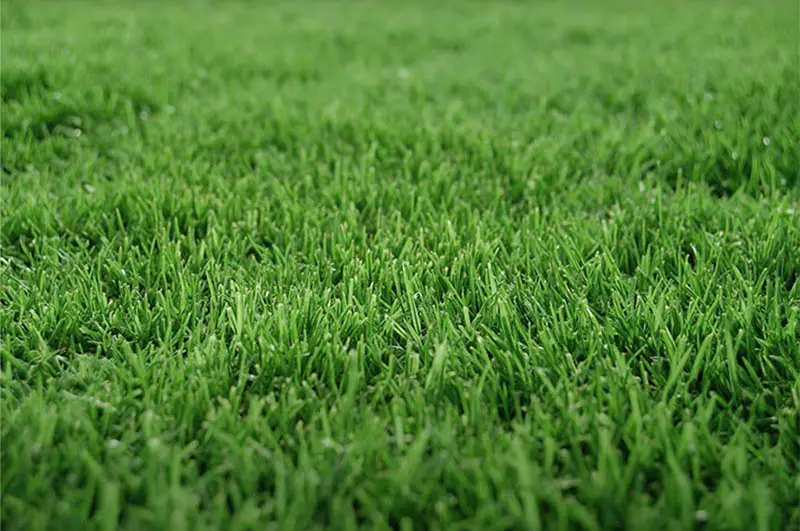
How to Kill Bermuda Grass in Garden Beds
To kill Bermuda grass in garden beds, you can manually remove the weed, treat it with a suitable weed killer, or solarize or mulch the affected beds.
Remove Bermuda Grass From Beds Manually
You can deal with a minimal infestation of Bermuda grass in a garden bed by removing it manually.
This method follows the same steps outlined in the previous section; you simply use a trowel to dig out the Bermuda grass wherever it’s growing. To reiterate, it’s crucial to remove all parts of the Bermuda grass roots and rhizomes from the soil for this method to be effective. You may need to repeat this method several times in order to completely get rid of the Bermuda grass for good.
Use Bermuda Grass Weed Killer on Beds
As a chemical means of control in garden beds, you can use an appropriate herbicide to kill Bermuda grass.
1. Purchase Selective Weed Killer for Bermuda Grass
You need to purchase a herbicide that will effectively tackle the Bermuda grass without harming nearby plants in the garden bed. For example, herbicides containing the ingredients Fluazifop or Sethoxydim will kill Bermuda grass without harming nearby shrubs and broadleaf perennials. Make sure whatever product you choose is safe for use around the surrounding plants.
2. Wait for Best Conditions to Apply Bermuda Grass Weed Killer
As we’ve already explained, the best time to apply weed killer is when the Bermuda grass is actively growing from May to September. Wait for a dry, non-windy day to avoid the weed killer blowing onto any wanted growth.
3. Apply Weed Killer to Garden Beds
Apply the weed killer to the patches of Bermuda grass in the planting beds. Follow the instructions carefully for your chosen product and wear protective gear for safe application.
Solarize Bed to Kill Bermuda Grass
Solarization is a natural method you can use to kill Bermuda grass without having to resort to chemical treatment. By placing plastic sheeting over the affected areas, you can raise the temperature beneath the sheeting to the point where it will bake and kill the Bermuda grass.
Take note that this method requires intense direct sunlight in order to be effective; therefore, it will not work to kill Bermuda grass if you have cool summers or the planting area is in the shade. It’s also important to note that the plastic sheeting will kill any other vegetation it covers.
1. Mow Bermuda Grass
If possible, mow the areas of the garden bed to reduce the Bermuda grass to just above ground level. This will improve the effectiveness of the solarization by reducing the amount of plant matter you need to eliminate.
2. Place Plastic Sheeting on Garden Bed
Stretch out sheets of clear plastic across the affected areas, avoiding covering any growth you don’t wish to harm. Anchor the sheeting by placing heavy objects like rocks or lumber around its edges; this will prevent the sheeting from blowing away, in addition to sealing in the heat that the sheeting generates.
3. Leave Sheeting in Place for 1 to 2 Months
Leave the sheeting in place for about 1 to 2 months. This will allow enough time for the sun’s rays to heat up the underlying soil, which in time will fry and kill the Bermuda grass entirely.
Mulch Bed to Kill Bermuda Grass
Mulching the garden bed with a dense mulching material will kill Bermuda grass by smothering it. This is another effective way to get rid of Bermuda grass naturally from a garden bed. The layer of mulch will block the weed’s access to the sun, disrupting its process of photosynthesis, thus killing the Bermuda grass.
1. Place Landscaping Fabric Over Bed
Spread a layer of landscaping fabric over the soil surface in the affected areas. Cut holes in the sheeting for your other wanted plants to prevent smothering them.
2. Cover Landscaping Fabric with Mulch
Spread a layer of mulch over the landscaping fabric to weigh it down and further block the sun’s rays from reaching the Bermuda grass. You can use sand, gravel, wood chips, or any other similar mulching material that has some weight.
3. Monitor Bermuda Grass Over Following Months
Monitor the edges of the sheeting for signs that the Bermuda grass has spread beyond the mulched area. It should take about 2 months for this method to kill the Bermuda grass entirely.


